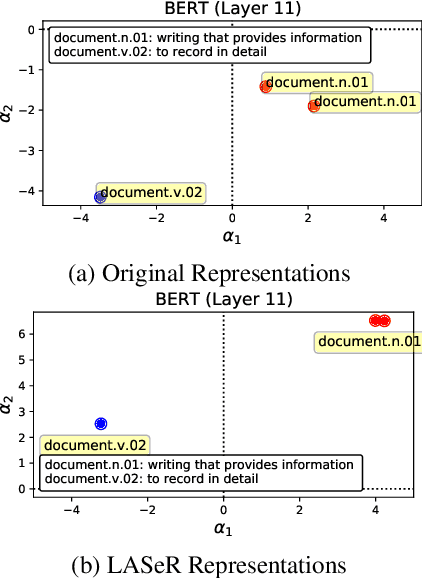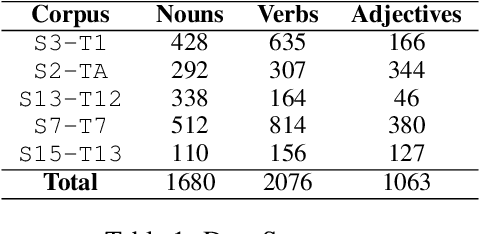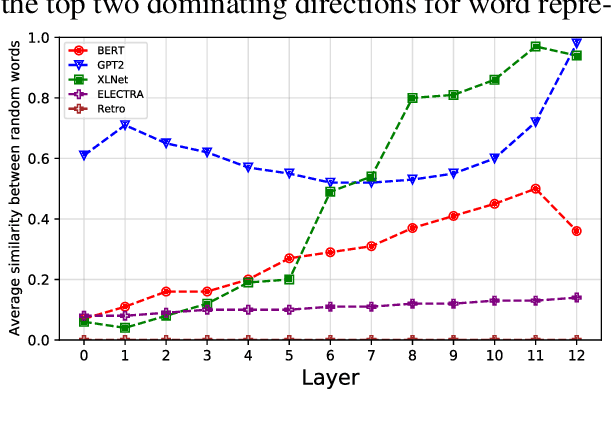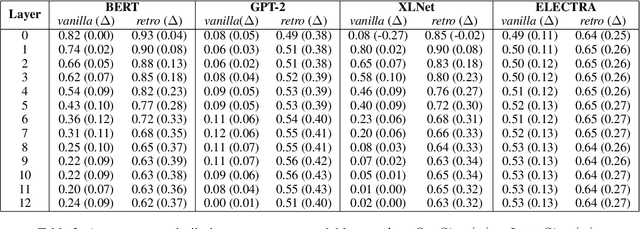Low Anisotropy Sense Retrofitting (LASeR) : Towards Isotropic and Sense Enriched Representations
Paper and Code
Apr 22, 2021



Contextual word representation models have shown massive improvements on a multitude of NLP tasks, yet their word sense disambiguation capabilities remain poorly explained. To address this gap, we assess whether contextual word representations extracted from deep pretrained language models create distinguishable representations for different senses of a given word. We analyze the representation geometry and find that most layers of deep pretrained language models create highly anisotropic representations, pointing towards the existence of representation degeneration problem in contextual word representations. After accounting for anisotropy, our study further reveals that there is variability in sense learning capabilities across different language models. Finally, we propose LASeR, a 'Low Anisotropy Sense Retrofitting' approach that renders off-the-shelf representations isotropic and semantically more meaningful, resolving the representation degeneration problem as a post-processing step, and conducting sense-enrichment of contextualized representations extracted from deep neural language models.
 Add to Chrome
Add to Chrome Add to Firefox
Add to Firefox Add to Edge
Add to Edge